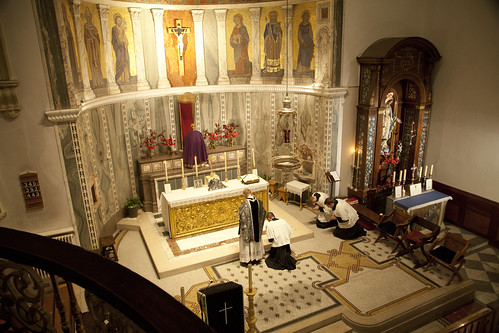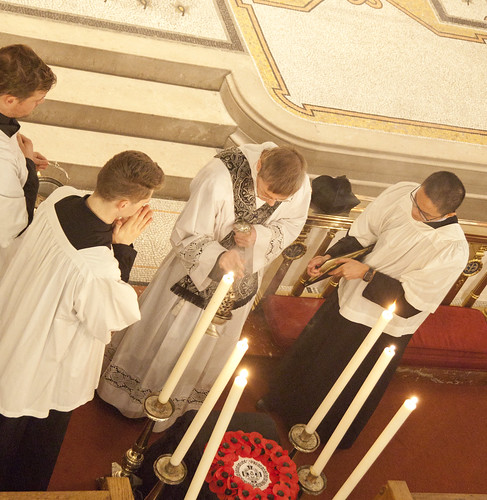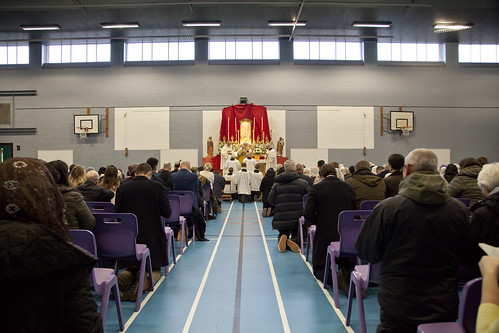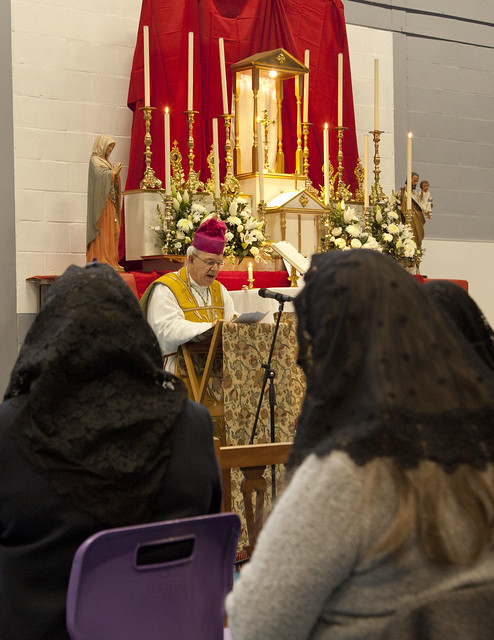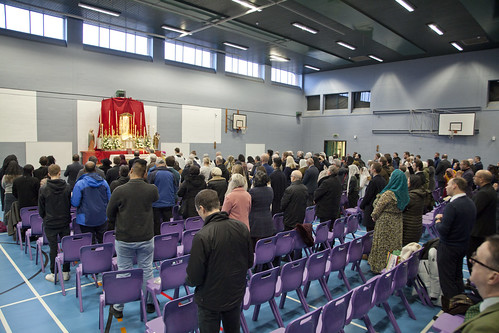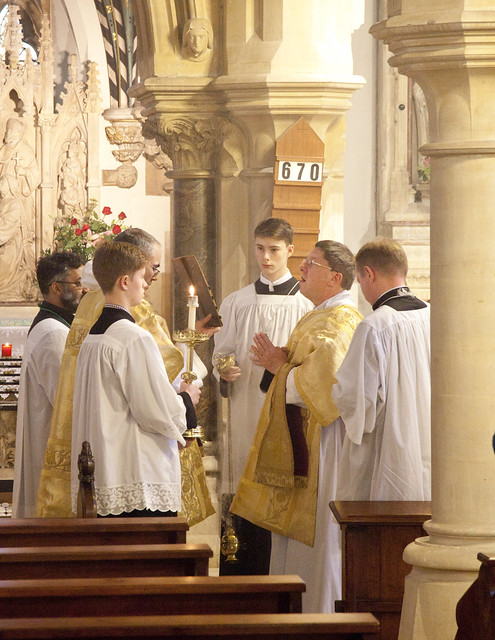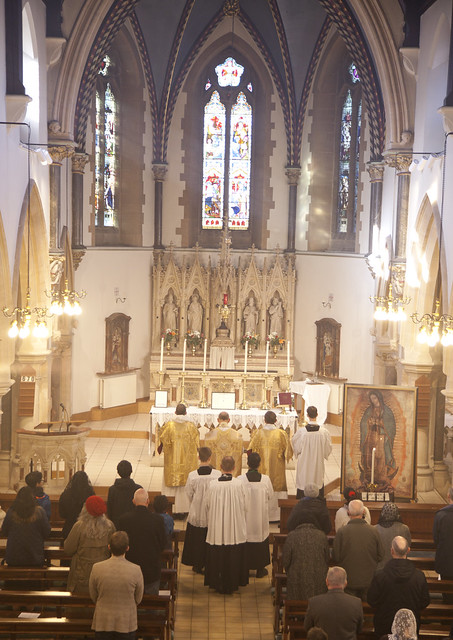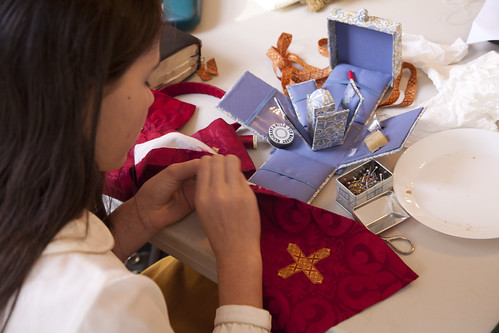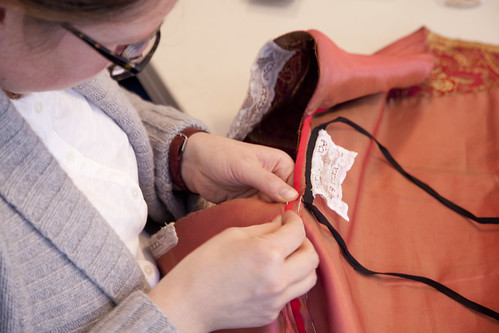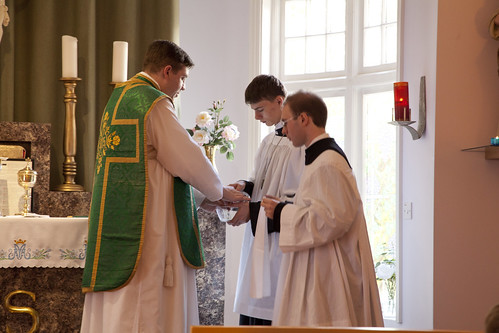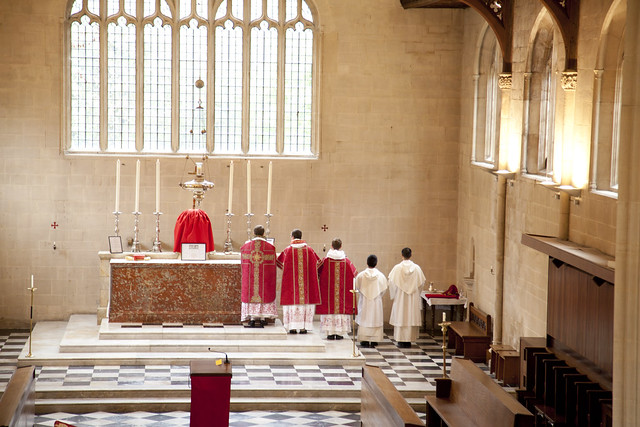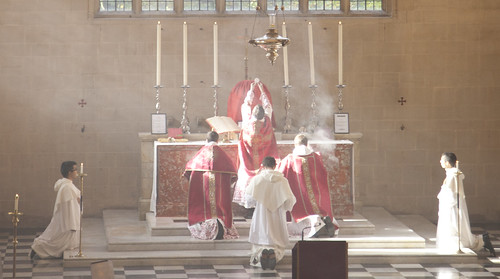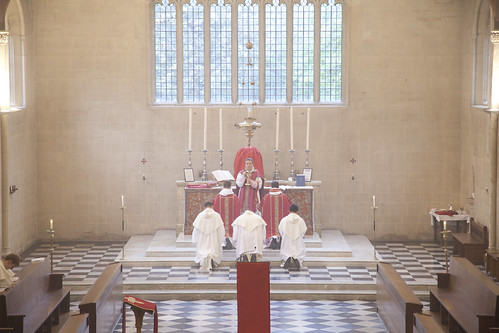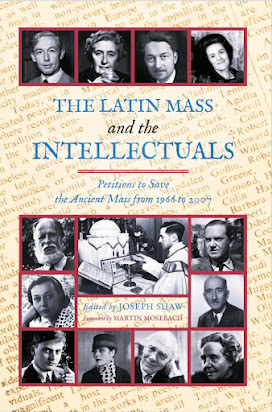Chairman's Blog
The Tablet on Bernard Wall, and 'The Latin Mass and the Intellectuals'
I'm delighted to see short piece on Bernard Wall in the latest issue of The Tablet, in the 'Word from the Cloisters' column. Wall is a central figure in my book, The Intellectuals and the Latin Mass, as this piece explains. On the one hand he rented a room from Tom Burns, legendary Tablet editor (the one who came out against Humanae Vitae in 1968), and on the other hand he was the chief 'convenor' of the 1971 petition to save the Traditional Mass. The letter of invitation to sign asked signatories to send replies to him, at his address in Ladbroke Grove.
In those days
liturgical reform meant the exact opposite of what it has come to mean since
the Second Vatican Council. It meant a purging of the liturgy of hideous
accretions—sugary nineteenth-century hymns and their counterparts,
mass-produced statues—but also restoring it to its pristine purity of Latin
chanted in the Gregorian manner.
LMS Mass listings
Since its inception, the Latin Mass Society has published lists of traditional Masses in England and Wales; for many years these have been available to all on its website. If you go to the relevant page now you will be asked to log in as a member. The reason for this is explained in the 'Chairman's Message' of the currant Mass of Ages, the magazine of the Latin Mass Society, which arrived with members over the weekend.
--------------
Chairman’s Message
Joseph Shaw
Mass of Ages
began as the Latin Mass Society’s Newsletter; we started selling a few
copies in about 2005 and we made it free in 2009. It’s availability to
non-members, indeed to anyone in the world online, allows us to explain
ourselves to a wider audience. It also means that in these pages we are not
simply talking among friends.
With this issue, we are instituting a new approach to
the information available to readers. Readers picking up Mass of Ages for
free at the back of church will no longer find, bound into their copies, a list
of Masses celebrated according to the 1962 Missal around England and Wales. Nor
will this list henceforth appear on the publicly accessible part of our
website. Members of the Latin Mass Society who receive their copies in the
post, on the other hand, will find them included.
To casual readers, this part of the magazine was the
bit in the middle they skipped over. For our members, I know, it can be a
lifeline, especially when travelling. Others again, looking at the list,
didn’t like what they saw, and didn’t think others should be able to see it. This
reality has a distorting effect on the listings: there have always been a few perfectly
licit and regular celebrations that could not be advertised. Sometimes this has
been a condition imposed by bishops.
The seriousness of the problem has depended on official
attitudes to the Traditional Mass. When, in the 1970s and 1980s, permissions
for it were seen by some as pastoral concessions to something that really ought
to hurry up and die out, a long and growing list of Masses celebrated with
permission was seen as an indication of the failure of the official policy, and
even a spur to greater repressive efforts. Furthermore, listing these Masses,
and therefore making them known to a wider group of people, could be seen as ‘promoting’
them, in defiance of the official policy. When people resorted to travelling
long distances for the Traditional Mass, their personal sacrifices were
regarded by some as a bad thing: not a sign of love for the liturgy, but contrary
to the spirit of the permission, supposedly given only for some vaguely defined
local group of people.
Of course, what the official attitude—the will of the
bishop, or of the pope of the day—really was, was not always easy to discern.
Bishops naturally varied in their views, among themselves and over time. Again,
I remember being told firmly that that Pope John Paul II ‘doesn’t like it’, but
the historical record of his words and actions paints a rather more complex
picture.
Readers know that those days, with all their confusion
and spiritual suffering, are back. Once again we are being told that promoting
the Traditional Mass is somehow problematic, and once again advertising Masses
has the potential to cause difficulties for celebrants, and even for their bishops.
We have made the decision, therefore, to make the Mass
listings available only to our members, who are also be kept up to date through
electronic means. I encourage those readers who value and make use of our Mass
listings to join the Society, if you share our aims. The membership fee is
equivalent to approximately 1p a day through the year, even if you do not
qualify for a concessionary rate. We have not raised it in line with inflation
in the last few years, and I’d say it was very good value. You can pay for it
in monthly instalments if you wish, and you get a discount if you pay by Direct
Debit. You also get a discount in our shop and when booking our major events.
Membership of the Latin Mass Society, however, should
not be seen primarily in terms of what you can get out of the Society. We are
not a commercial venture offering a parcel of goods for fixed sum. We are a
group of Catholics determined to preserve the Church’s liturgical patrimony,
and to use every resource, of our prayers, knowledge, skills, time, and
energy—and money as well—to do so. As an LMS activist, Bernard Wall, wrote in
explanation of the 1971 Petition to save the ancient Mass, signed by Agatha
Christie and so many others: the signatories ‘felt that a liberal and plural
approach to church ceremonies was in harmony with our age where all are allowed
to do and think what suits them best, and that a totalitarian prohibition of
the old Mass involved an out-of-date approach.’
Support the Latin Mass Society
Requiem for the Catholic Military Association
On Wednesday 29th November, the Latin Mass Society arranged a Requiem Mass for the Catholic Military Association of Our Lady of Victories (see their website and their Facebook page). This association, which is only a few years old (though it had precursors), supports Catholics in the British armed services, and their families.
The traditional Missa Cantata was celebrated by Fr Mark Elliot Smith, parish priest, in Our Lady of the Assumption and St Gregory, Warwick Street, in London.
Bishop Schneider in Milton Keynes
Last Sunday Bishop Schneider celebrated Mass in Milton Keynes. This was part of a trip organised by Catholic Voice, a newspaper based in Ireland. As news of the Mass spread, it became clear that the local churches would be too small, so it took place--with the approval of the bishop and the parish priest--in a school hall, with a remarkable portable altar.
It was a Pontifical Low Mass, and the Latin Mass Society sponsored polyphonic motets to accompany it. Following Mass Bishop Schneider gave a talk in the same venue.
Who is to blame for lapsations? Me in Crisis magazine
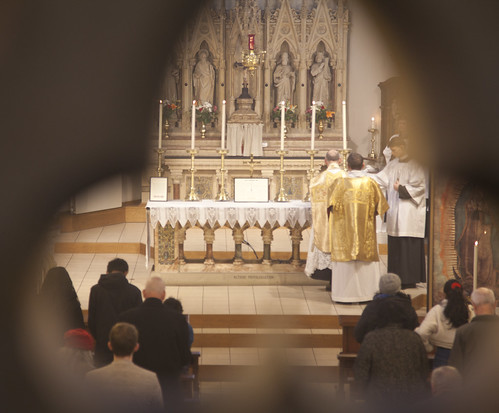 |
| Closer than most young Catholics will ever get to the Traditional Mass. LMS Annual Mass in Bedford in honour of Our Lady of Guadalupe. |
Every now and then we read on social media about a Catholic lapsing from the practice of the Faith, or apostatizing—transferring allegiance to some grouping not in communion with the Holy See. This is always a tragedy. As St. Peter said to Christ when some disciples left Him because of His teaching on the Eucharist, “Thou hast the message of eternal life” (John 6:68).
There are many reasons why people leave, and it is something which has happened on a truly apocalyptic scale in recent decades, starting in the 1970s, in Europe and North America. It is depressingly predictable that many Catholic commentators display very little curiosity about why it has been happening, until they think they have found a way to use it as a stick to beat an opponent. This is what happened to Eric Sammons on Twitter/X when he shared the content of an email he had received by someone who had left for the Orthodox Church.
Not only do many of Sammons’s respondents show no compassion for the man in question, or understanding of the factors which influenced his decision, but they contrive to blame Sammons, and the Traditional movement in general, for what happened. Their argument seems to go like this: the guy complains about poor liturgy; therefore, the people who recognize that liturgy is indeed often poor and want to improve it must have influenced him into thinking that liturgy is important enough to leave the Church over. The same goes for his other complaints: effeminacy, the lack of “challenge,” the impression that even some priests don’t believe in the Real Presence, and so on. If we address these concerns by trying to improve things, we are part of the problem because we are admitting that some aspects of Church life could be improved.
Annual Mass of Reparation for Abortion in Bedford: photos
The Latin Mass Society began this Mass following the tragic abortion referendum in Ireland. The Church of the Holy Child & St Joseph, Bedford houses the national shrine of Our Lady of Guadalupe, patroness of the pro-life movement.
It was accompanied by a Byrd Mass and the chant propers (it was a Votive Mass of Our Lady of Guadalupe), by a small choir under the direction of Dominic Bevan. Mass was attended by 70 to 80 people.
Sewing Retreat: photos
Talk on the Latin Mass and the Intellectuals
This is the talk I gave to the Pax Liturgia Conference in Rome to launch my book, The Latin Mass and the Intellectuals. If you click below it will start at 3 mins 35 secs and skip the introductory matter.
Oxford Pilgrimage 2023: photos
I delighted to
I delighted to announce the launch of
The Latin Mass and the Intellectuals:
Petitions to Save the ancient Mass from 1966 to 2007
Preface
by Martin Mosebach
With contributions
from Leo Darroch, Fr Gabriel Díaz-Patri, Philip Maxence, Sebastian Morello, Matthew
Schellhorn, and Erik Tonning
In due course it will be available from Arouca Press (in the USA) and the Latin Mass Society shop (in the UK), and Amazon: see my author page.
I will be introducing it in Rome, at the
Paix Liturgique Conference, Friday 27th October (Patristic Institute Augustinianum, via Paolo VI, 25),
and in London on Thursday 9th November.
The London launch will take place at the St Wilfrid Hall, London Oratory SW7 2RP
As you know, I have many friends in the world who are artists, poets, authors, editors, etc. Now they are well able to appreciate our chant and even our Latin. But they are all, without exception, scandalized and grieved when I tell them that probably this Office, this Mass will no longer be here in ten years. And that is the worst. The monks cannot understand this treasure they possess, and they throw it out to look for something else, when seculars, who for the most part are not even Christians, are able to love this incomparable art.
Support the Latin Mass Society







